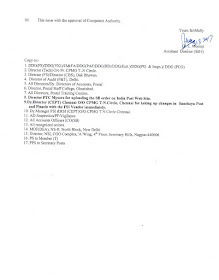In a written response to questions in Parliament by Members of
Parliament Pashupati Nath Singh and Ninong Ering, Telecom Minister Manoj Sinha
said that the India Post Payments Bank, as of the end of January 2017, was
operational only with 8 access points in total, in Raipur (Chhatisgarh) and Ranchi
(Jharkhand). The Payments Bank intends to set up access points in post offices
in up to 650 districts with linkages to all post offices (around 1.55 lakh of
them) across India, by September 2017, “subject to feasibility and fulfillment
of regulatory requirements.”
Remember
that AP Singh, interim managing director and CEO of the India Posts Payments
Bank had said that it intends to allow sending money from one Aadhaar number to
another, and Aadhaar will be made a payment address which can work with or without
a bank account linked to it. However, the payments bank does offer bank
accounts of three types: Safal, which is a regular account, with a maintenance
fee of Rs 100 from the second year, and Sugam and Saral which are basic savings
deposit accounts. Sugam accounts have a maximum balance of Rs 1 lakh. Saral
account has a maximum balance of Rs 50,000.

According to the filing, the India Post Payments Bank has issued
1619 Debit Cards so far: around 832 in Jharkhand and 787 in Chhatisgarh. While
the Payments Bank hasn’t installed any ATMs, the Department of Posts has around
976 ATMs in rural India. The Minister stated that the Payments Bank has had
“preliminary discussions” for collaboration with the International Finance
Corporation (World Bank), but “no formal proposal to this effect has been
received.”
Other companies have approached the India Post Payments Bank for
collaboration, including “domestic and international financial entities in the
field of banking, insurance, international money transfer, mutual funds etc.
The Minister shared a list of 98 companies that he said are “keen to partner”
with the India Post Payments Bank, which, surprisingly, included Obopay, which
we didn’t know was still around, after its disastrous history; I just checked
and its investor Elephant Capital’s August 2016 report says that the company
“has no value”.
//COPY//-POTOOLS(31-
3-17)












